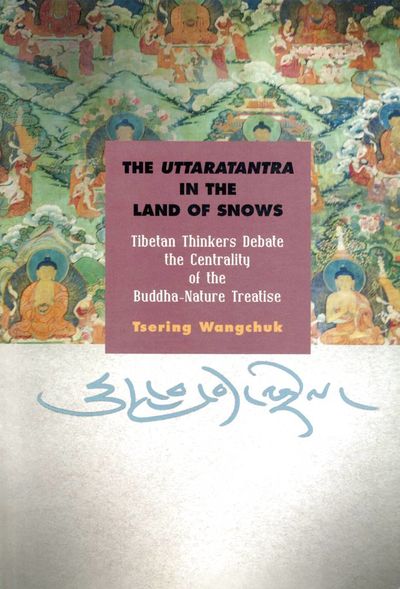- Acknowledgmentsxi
- Introduction1
- General Remarks1
- Textual Historical Background5
- Part I. Early Period: Kadam Thinkers Rescue the Treatise13
- Chapter 1. Rise of the Uttaratantra in Tibet: Early Kadam Scholars
Revitalize the Newly Discovered Indian Exegesis13- Introduction13
- Ngok and Chapa on the Pervasive Nature of the Buddha-Body15
- Ngok and Chapa on Definitive or Provisional Nature in the
Uttaratantra 18 - Ngok and Chapa on the Uttaratantra as a Last Wheel Treatise 19
- Buddha-Element as a Conceived Object20
- Ngok and Chapa Differ on Emphasis21
- Conclusion24
- 2. Sowing Seeds for Future Debate: Dissenters and Adherents25
- Introduction 25
- Sapen, the Dissenter 26
- Rikrel, the Third Karmapa, and Sangpu Lodrö Defend the
Uttaratantra 29 - Rinchen Yeshé’s Proto Other-Emptiness Presentation of the
Uttaratantra, and Butön’s Reply34 - Conclusion38
- Chapter 1. Rise of the Uttaratantra in Tibet: Early Kadam Scholars
- Part II. The Pinnacle Period: the Other-Emptiness Interpretation Spreads 43
- 3. Other-Emptiness Tradition: The Uttaratantra in Dölpopa’s Works43
- Introduction43
- Predominance of the Last Wheel Scriptures44
- Is the Uttaratantra a Cittamātra Text or a Madhyamaka Text?46
- Classification of Cittamātra48
- Classification of Madhyamaka51
- Conclusion54
- 4. The Uttaratantra in Fourteenth-Century Tibet55
- Introduction 55
- Sazang Follows in His Master’s Footsteps55
- Two Fourteenth-Century Kadam Masters’ Uttaratantra
Commentaries 59 - Longchenpa’s View on the Uttaratantra63
- Conclusion65
- 3. Other-Emptiness Tradition: The Uttaratantra in Dölpopa’s Works43
- Part III. The Argumentation Period: Self-Emptiness Proponents criticize
Other-Emptiness Approach 69- 5. Challenges to the Purely Definitive Nature of the Uttaratantra: Zhalu
Thinkers Criticize Dölpopa 69- Introduction69
- Butön’s Ornament 70
- Dratsépa’s Commentary72
- Conclusion80
- 6. Challenges to the Supremacy of the Uttaratantra: Rendawa and
Tsongkhapa on Tathāgata-essence Literature 83- Introduction83
- Rendawa on the Uttaratantra and the Tathāgata-Essence Literature83
- Tsongkhapa on the Uttaratantra and the Tathāgata-Essence Literature89
- Conclusion95
- 7. Gyeltsap’s Commentary on the Uttaratantra: A Critique of Dölpopa’s Interpretation of Tathāgata-essence Literature97
- Introduction97
- Middle Wheel and Last Wheel Teachings101
- Definitive Meaning and Provisional Meaning103
- Self-Emptiness and Other-Emptiness104
- Conclusion106
- 5. Challenges to the Purely Definitive Nature of the Uttaratantra: Zhalu
- Conclusion109
- General Remarks109
- Completing the Cycle112
- Notes119
- Bibliography181
- Tibetan Language Works Cited181
- English Language Works Cited186
- Index191



